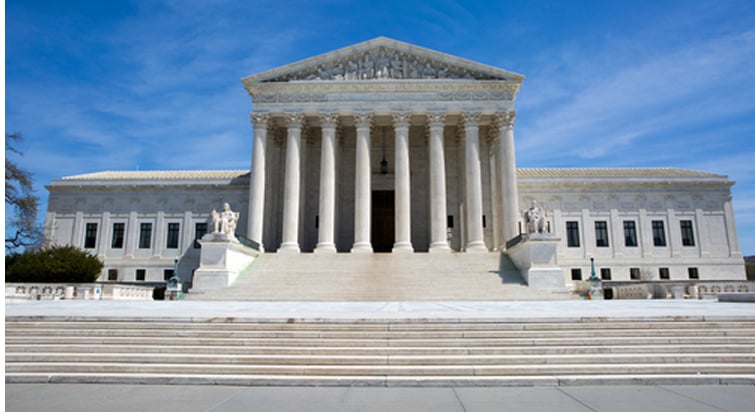Supreme Court strikes down Minnesota's broad ban on political apparel at polling places

Steven Frame/Shutterstock.com.
Minnesota’s broad ban on political badges, buttons and insignia at polling places violates the First Amendment, the U.S. Supreme Court ruled Thursday in a 7-2 opinion.
Some forms of advocacy may be excluded from polling places, but the state has to draw a reasonable line, Chief Justice John G. Roberts Jr. wrote in the majority opinion.
Minnesota has not drawn that line, he said.
“The state must be able to articulate some sensible basis for distinguishing what may come in from what must stay out” of the polling place, Roberts said. “Here, the unmoored use of the term ‘political’ in the Minnesota law, combined with haphazard interpretations the state has provided in official guidance and representations to this court, cause Minnesota’s restriction to fail even this forgiving test.”
The Minnesota law does not define the term political. A literal reading of the term could lead to a ban on a button or T-shirt that merely implores others to “Vote!” Roberts said.
Minnesota gives election judges the authority to decide whether an item is banned. Any voter who refuses to remove or conceal a prohibited item will be allowed to vote, but the person will be referred for administrative hearings that could result in a civil penalty. The hearing body could also refer the individual for a criminal prosecution for a misdemeanor carrying a $300 fine.
A majority of states agree with Minnesota that at least some kinds of campaign-related clothing and accessories should stay outside the polling place, and that broadly shared assessment is entitled to some respect, Roberts said. That means “Minnesota may choose to prohibit certain apparel there because of the message it conveys, so that voters may focus on the important decisions immediately at hand.”
Minnesota had argued its ban applies to words and symbols that a reasonable person would perceive as conveying a message about the electoral choices before the voters. Minnesota went further, however, and argued that the ban also applies to “issue oriented material designed to influence or impact voting.”
What qualifies as an issue? Roberts wondered. The answer appears to be any subject on which a candidate or party has taken a stance. That went too far, Roberts said. “A rule whose fair enforcement requires an election judge to maintain a mental index of the platforms and positions of every candidate and party on the ballot is not reasonable.”
Even worse, Roberts said, was Minnesota’s policy of banning any item promoting a group with recognizable political views about issues confronting voters. Groups and businesses, including AARP and Ben & Jerry’s, have stated positions on matters of public concern, Roberts said. Does that mean their insignia could be banned? Even the state has difficulty with the answers, Roberts said.
Other states have better descriptions of banned items, Roberts said. Texas, for example, bans “a badge, insignia, emblem, or other similar communicative device relating to a candidate, measure, or political party appearing on the ballot, or to the conduct of the election.”
Roberts also pointed to California, which bans the display of information “that advocates for or against any candidate or measure,” including the “display of a candidate’s name, likeness, or logo,” the “display of a ballot measure’s number, title, subject, or logo,” and buttons, hats or shirts containing such information.
Roberts cautioned that he wasn’t reviewing the constitutionality of those laws. “But we do hold that if a state wishes to set its polling places apart as areas free of partisan discord, it must employ a more discernible approach than the one Minnesota has offered here,” he said.
Justice Sonia Sotomayor dissented in an opinion joined by Justice Stephen G. Breyer.
Sotomayor said she would certify the case to the Minnesota Supreme Court for a definitive interpretation of the political apparel ban. That “likely would obviate the hypothetical line-drawing problems that form the basis of the court’s decision today,” she wrote.
The case is Minnesota Voters Alliance v. Mansky.
Related articles:
ABAJournal.com: “Chemerinsky: Free speech at the Supreme Court”
ABAJournal.com: “Supreme Court agrees to review law banning political apparel at polling places”



